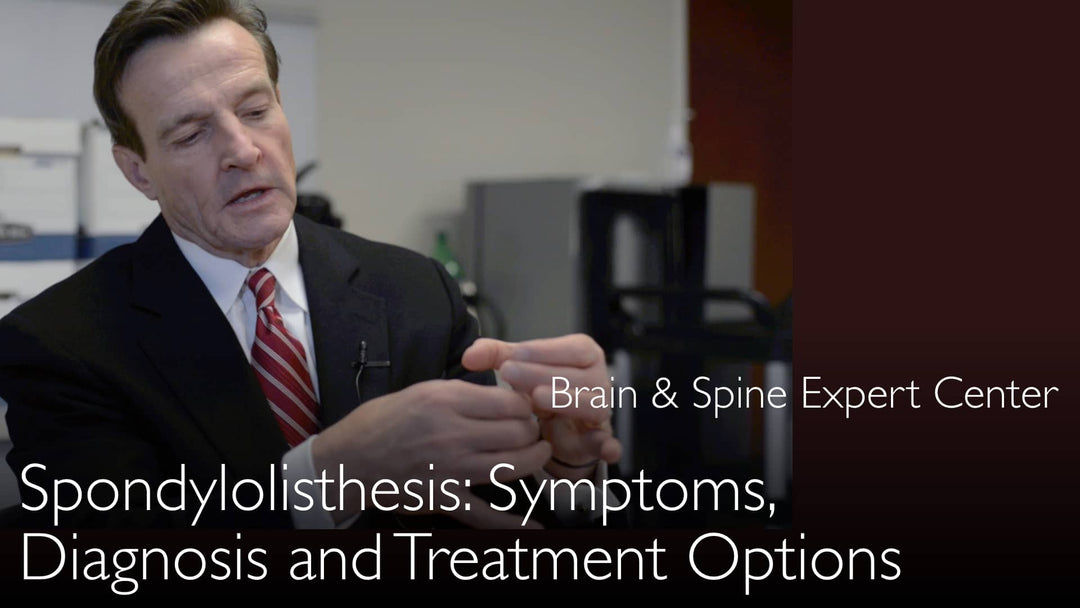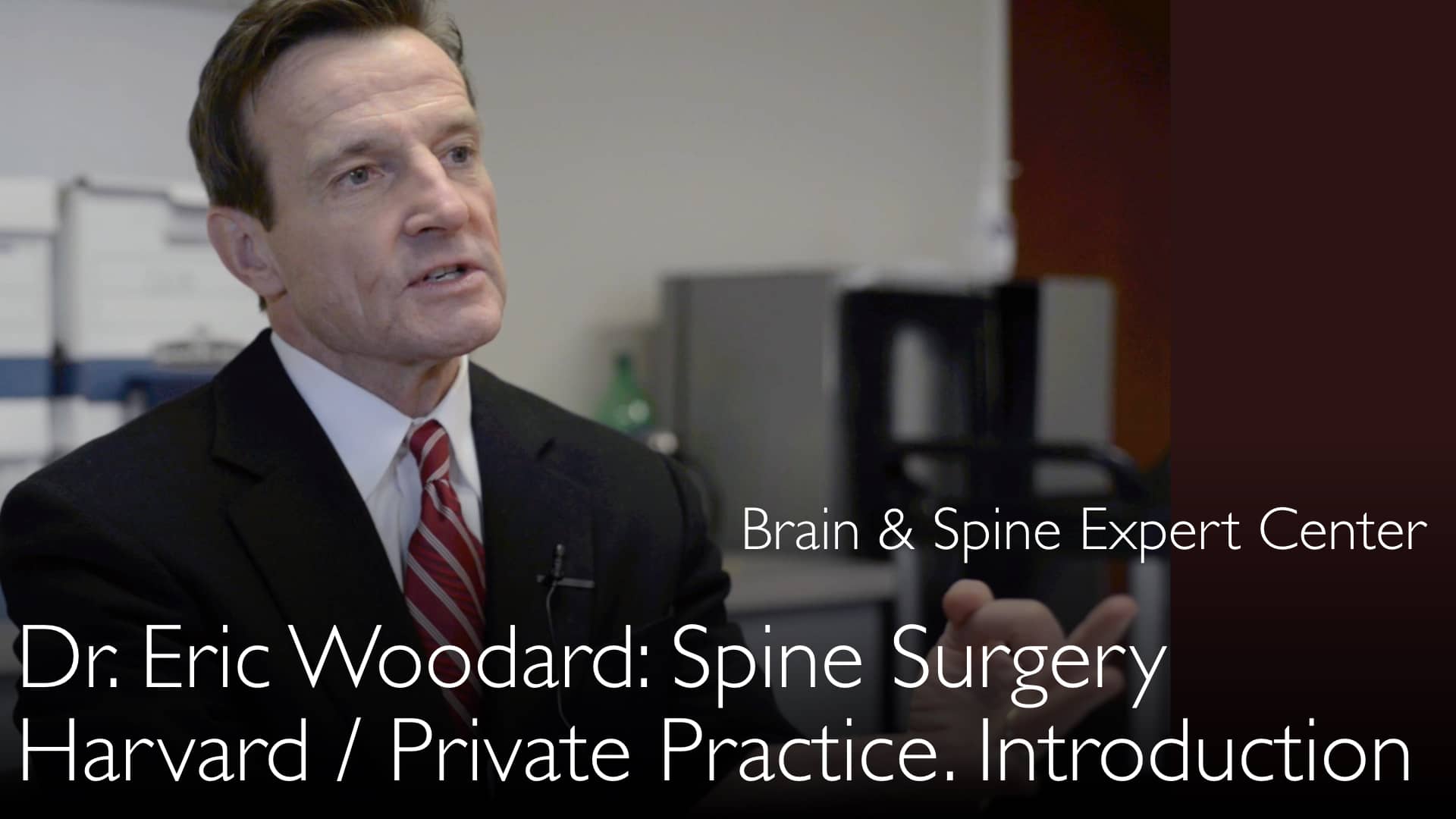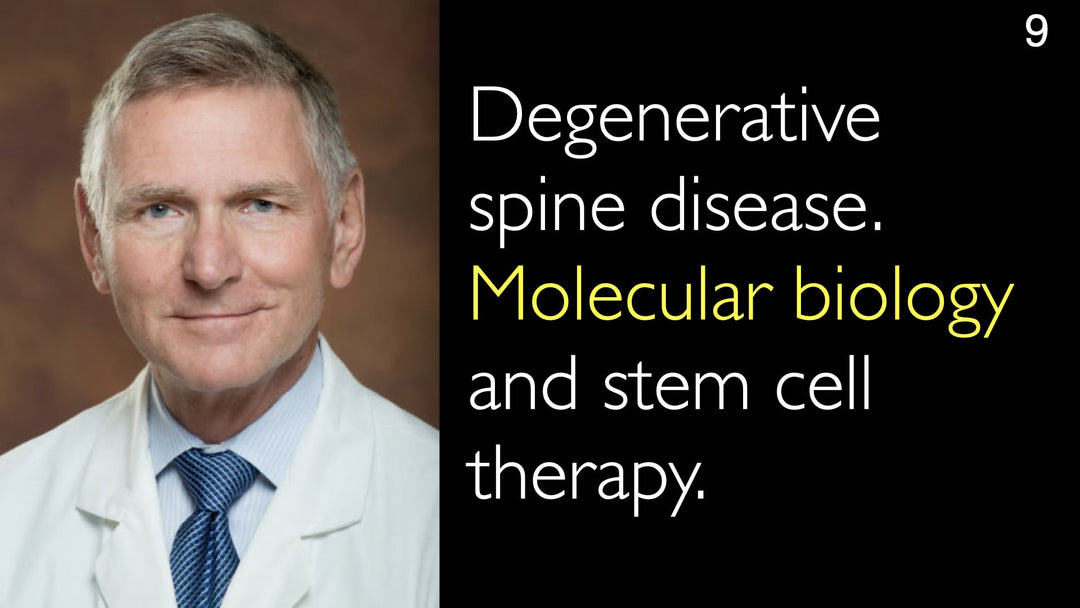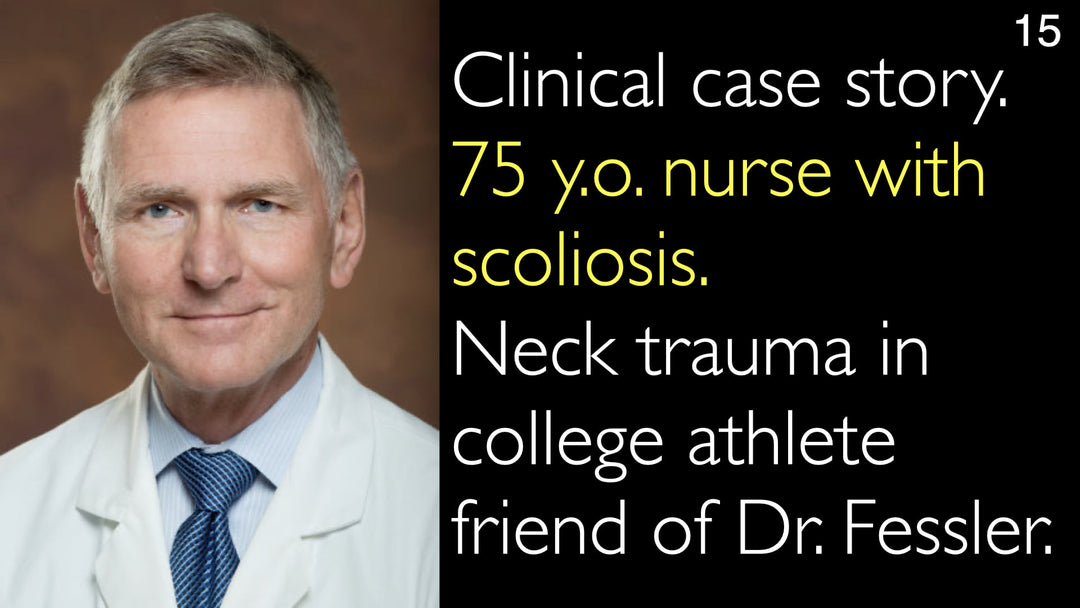Leading expert in spine surgery, Dr. Eric Woodard, MD, explains the causes, symptoms, and treatment options for spondylolisthesis. This condition involves the forward slippage of one vertebra over another, commonly affecting the L4 and L5 vertebrae. Symptoms include debilitating leg and back pain, particularly a type of intermittent claudication that worsens with walking. Dr. Woodard details the three key principles for deciding on surgical intervention. He also clarifies how to differentiate spinal claudication from vascular claudication. Non-surgical treatments like physical therapy are always attempted first. A medical second opinion is highly recommended to confirm the diagnosis and optimal treatment plan.
Understanding and Treating Spondylolisthesis: From Diagnosis to Surgery
Jump To Section
- What is Spondylolisthesis?
- Symptoms and Intermittent Claudication
- Diagnosing Spondylolisthesis
- Non-Surgical Treatment Options
- Surgical Treatment for Spondylolisthesis
- Differential Diagnosis: Spine vs. Vascular Issues
- Full Transcript
What is Spondylolisthesis?
Spondylolisthesis is a spinal condition characterized by the forward displacement of one vertebra over the one beneath it. Dr. Eric Woodard, MD, a leading spine surgeon, explains that this misalignment most commonly occurs at the L4 and L5 vertebrae in the lumbar spine. This condition is a significant contributor to spinal stenosis, which is a narrowing of the spinal canal that leads to nerve compression. Degenerative spondylolisthesis is particularly prevalent in postmenopausal women, likely due to hormonal effects on joint health that lead to mechanical failure.
Symptoms and Intermittent Claudication
The primary symptoms of spondylolisthesis are leg pain, hip pain, and back pain. A classic sign is neurogenic intermittent claudication. Dr. Eric Woodard, MD, describes this as leg pain that becomes heavier and more painful with each step during walking. Patients often must sit and rest for several minutes to regain strength before they can walk again for a short distance, such as 100 to 200 yards. This pain is directly related to spinal position and mechanical stress on the nerves, rather than a lack of blood flow.
Diagnosing Spondylolisthesis
Diagnosis of spondylolisthesis involves a combination of clinical evaluation and advanced imaging. Dr. Anton Titov, MD, discusses the importance of a thorough assessment with a specialist. A spine MRI is crucial for visualizing the degree of vertebral slippage and the severity of associated spinal stenosis. Dr. Eric Woodard, MD, emphasizes that the diagnosis is not based on imaging alone. The character of the pain and the patient's response to certain positions are key diagnostic clues that help differentiate it from other conditions.
Non-Surgical Treatment Options
Initial treatment for spondylolisthesis is almost always non-surgical. Dr. Eric Woodard, MD, states that the cornerstone of conservative management is physical therapy focused on strengthening the core muscles of the torso and pelvis. This includes specific spondylolisthesis exercises designed to improve flexibility and support the spine. The response to this initial conservative therapy is one of the three critical factors in determining if a patient needs to progress to surgical options. Many patients find significant relief through dedicated non-surgical regimens.
Surgical Treatment for Spondylolisthesis
Surgery for spondylolisthesis is considered when conservative measures fail and symptoms are severe. Dr. Eric Woodard, MD, outlines the surgical principles: releasing the pinched nerves and stabilizing the vertebrae. This is typically achieved through a laminectomy to decompress the nerves, followed by a spinal fusion procedure. Fusion often involves the use of pedicle screws to grip the vertebrae and prevent further slippage, allowing a bone graft to fuse them together. Modern minimally invasive (percutaneous) techniques use computer guidance for smaller incisions and faster recovery, which takes a couple of months.
Differential Diagnosis: Spine vs. Vascular Issues
Distinguishing spondylolisthesis from peripheral vascular disease is a critical diagnostic step, as both can cause intermittent claudication. Dr. Anton Titov, MD, raises this important question in his discussion with Dr. Eric Woodard, MD. Dr. Eric Woodard, MD, explains that vascular claudication primarily causes calf and foot pain with minimal back pain, and symptoms are triggered by any increased demand for blood flow. In contrast, spinal claudication from spondylolisthesis has a strong positional component; patients often feel relief when hunched forward on a stationary bike or leaning on a shopping cart, activities that still cause pain in those with vascular disease.
Full Transcript
Dr. Anton Titov, MD: Spondylolisthesis causes, symptoms, and treatment are reviewed by a leading Boston-based spine surgeon. When does spondylolisthesis progress to a degree that requires surgical treatment?
Dr. Anton Titov, MD: How to differentiate between spondylolisthesis symptoms and peripheral vascular disease in the legs? Because both diseases cause intermittent claudication.
Dr. Anton Titov, MD: How and when to treat spondylolisthesis surgically?
Dr. Anton Titov, MD: What variations of spondylolisthesis surgery exist?
Spondylolisthesis is the forward displacement of vertebrae. It is quite common, especially in the L5 vertebral body in the lumbar area.
Dr. Anton Titov, MD: What kind of symptoms do patients with spondylolisthesis experience?
Dr. Anton Titov, MD: What are the appropriate diagnostic and treatment steps for patients with spondylolisthesis?
Dr. Eric Woodard, MD: As the spine ages, spondylolisthesis is one of the several factors that contribute to spinal stenosis. Spinal stenosis is a narrowing of the spinal cord canal. Spinal stenosis leads to pinching of the nerves and symptoms.
Dr. Eric Woodard, MD: Spondylolisthesis is a particular situation in which the vertebrae start to misalign. There is a forward slippage of one vertebral body over the other. Most commonly, spondylolisthesis occurs at lumbar vertebral body number four on number five.
Dr. Eric Woodard, MD: It is much more common in postmenopausal women. This is probably due to hormonal effect on the health of the joints between lumbar vertebral body number four and number five. When the joints become suitably arthritic, there is a mechanical failure of the joints.
The body weight tends to pull the torso forward on the pelvis. It occurs most commonly at L4 and L5 vertebrae.
Dr. Eric Woodard, MD: The stenosis is a narrowing of the spinal canal that causes pinching of the nerves. There is an associated experience of leg pain and hip pain. The pain appears especially when assuming certain positions, such as the upright position, with certain activities such as walking.
Classically, we call it claudicating leg pain, intermittent claudication. With every step, the legs become heavier and heavier, and more and more painful, until such time that the patient has to sit at rest for a few minutes.
Then the patient with spondylolisthesis regains their strength, and they can go on for another 100 yards or two hundred yards before they have to sit again. This is a syndrome called claudicating leg pain, intermittent claudication, and it is characteristic of spinal stenosis.
Spondylolisthesis is one of the more common causes of spinal stenosis.
Dr. Eric Woodard, MD: The indications to do something surgical with regard to degenerative spondylolisthesis again gets us back to our principles. The principles are: one, what is the severity of symptoms? Two, what is the response to initial conservative therapy, such as exercise and flexibility? And three, how severe is it on the radiograph, on spine MRI?
All those three things have to be put together with progression of pain. Certainly, with any weakness of the legs, that is a pretty strong indicator for surgical treatment.
Dr. Anton Titov, MD: What is the typical surgical treatment for spondylolisthesis?
Dr. Eric Woodard, MD: The principle of treatment for spondylolisthesis is to release the spinal stenosis, basically to release the spinal nerve pinching. There are a variety of ways to do that.
Increasingly today, there are a variety of novel ways to release the spinal stenosis. But also, there are methods to stabilize or reposition the vertebrae that have slipped forward. This is most typically done with removal of the roof for the spinal canal.
This surgery is called laminectomy. Laminectomy releases the nerves and stops the pinching. But it is also done to stabilize vertebrae, typically with a spinal fusion type procedure of the two vertebrae to arrest the slipping process.
There have been a whole variety and enormous interest in the industry in the last three decades of providing technology to stabilize and reposition the spine in patients with spondylolisthesis. Pedicle screws have been developed since the mid-1980s.
Pedicle screws are very commonly used now to provide a firm grip on lumbar vertebral bodies number four and number five. Pedicle screws help to prevent further slippage and hold vertebral bodies still. Pedicle screws then allow a bone graft that is placed between lumbar vertebral bodies number four and five to then fuse vertebral bodies four and five together.
Some more of the modern techniques involve less and less invasiveness or openness of the surgery. These minimally invasive techniques are called percutaneous techniques. They require only small incisions for computer-aided placement of such technologies as pedicle screws.
Dr. Anton Titov, MD: You mentioned intermittent claudication as one of the symptoms of spondylolisthesis. Intermittent claudication is also common with peripheral vascular disease. Because of overlapping demographics of patients with spondylolisthesis and with peripheral vascular disease, it also causes the pain and the weakness in the legs.
Dr. Anton Titov, MD: In your practice, how do you distinguish the symptoms of spondylolisthesis from symptoms of peripheral vascular disease? Because patients could have multiple reasons for problems with their legs.
Dr. Eric Woodard, MD: Excellent question. Typically, the patient with peripheral vascular occlusion and what we call peripheral vascular disease have much more dominant symptoms involving the calves and the feet. Patients with peripheral vascular disease have much less of a back pain component to it as opposed to lumbar spinal claudication, intermittent claudication.
Typically, the activities that cause any increased demand on blood flow also will cause symptoms. Whereas in lumbar spinal stenosis, it is the position of the lumbar spine and pelvis that initiate the symptoms. Symptoms of spondylolisthesis are due to an increase in the mechanical stress on the lumbar spine.
One of the classic differentiators that we inquire about is whether symptoms are produced solely with walking, or there are symptoms also produced when patients are hunched forward on a stationary bike? The lumbar stenosis spondylolisthesis patients are perfectly comfortable on a stationary bike.
In fact, they will tell you that the hunch forward position, such as leaning on a shopping cart or on a stationary bike, is perfectly fine. It does not produce symptoms in patients with spondylolisthesis intermittent claudication.
A person with vascular claudication, however, is still symptomatic in that kind of an activity. There is less of a positional component to it in vascular claudication intermittent claudication. There is a much more of a distal involvement, typically at the calves.








